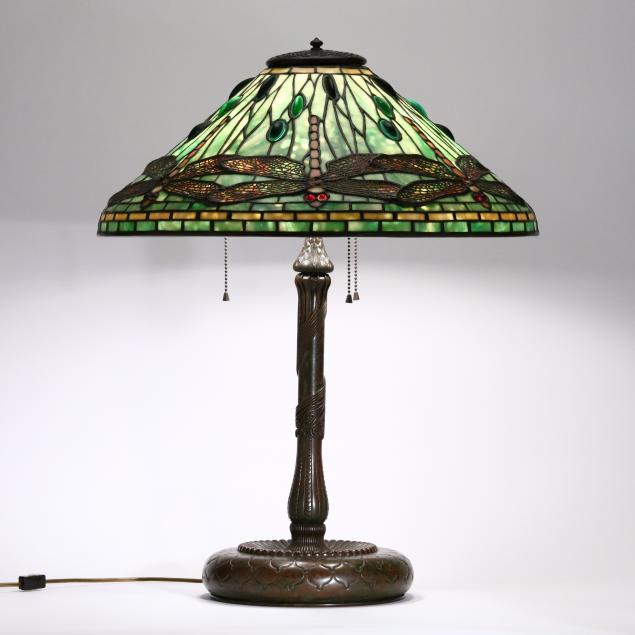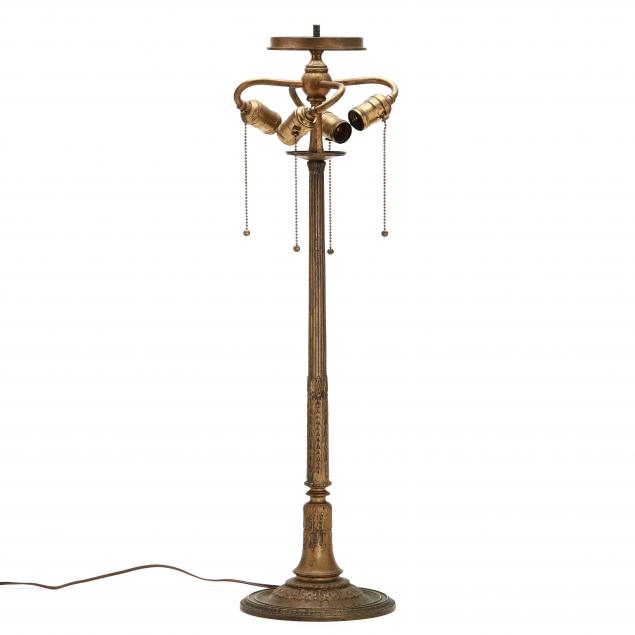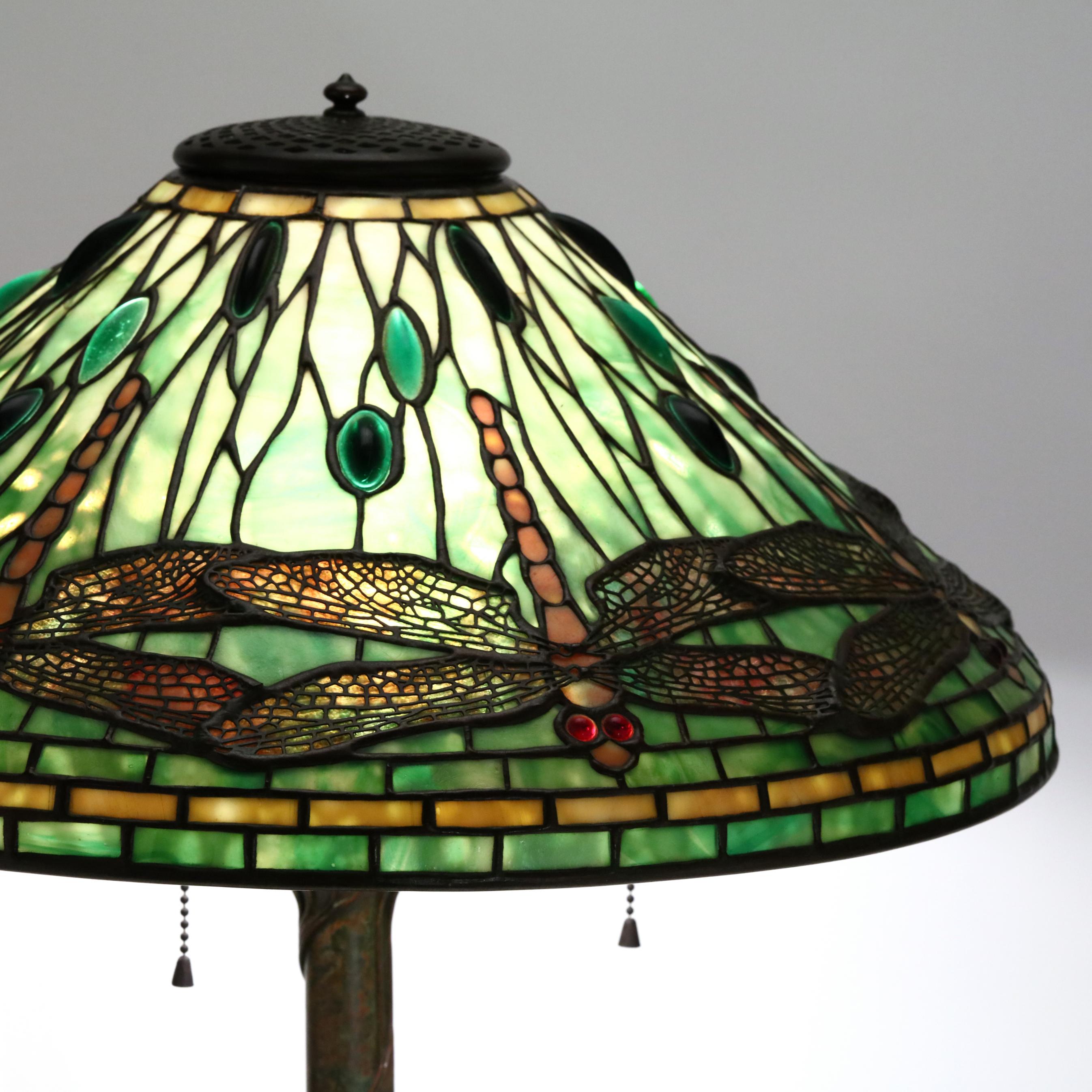
Shedding Light on the Glass Ceiling
Louis Comfort Tiffany was the creative vision and inspiration behind Tiffany Studios designs. A relatively recent discovery of letters tells the story of Clara Driscoll, a trailblazer of her time and the designer of the famous Dragonfly shade.
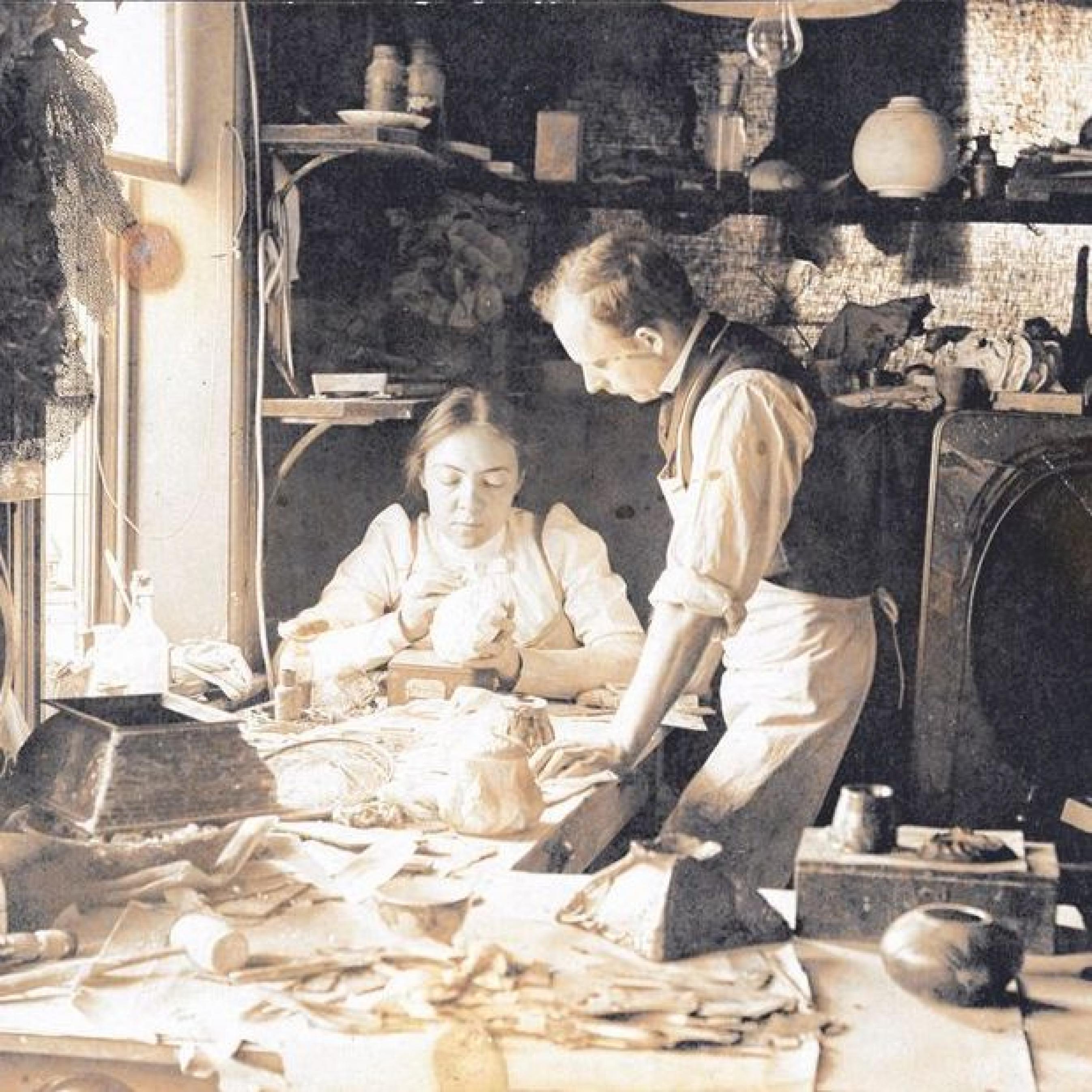
Driscoll in the studio with Joseph Briggs, a manager at Tiffany Studios, circa 1901.
In 1888, a time when women had not yet won the right to vote, Clara Driscoll left her hometown in Ohio to further her studies at the Metropolitan Museum of Art and pursue an artistic career. Driscoll soon found herself employed in the glass cutting department at Tiffany Glass Studios (later Tiffany Studios).
Notwithstanding a few interruptions, due to the employment-prohibiting condition of her being married, Driscoll flourished in her work. She was soon managing the women’s glass cutting department, who referred to themselves as, the “Tiffany Girls.” In letters she wrote to her family in Ohio, Driscoll conveys that she shared an artistic vision, as well as a love of nature and beautiful materials, with Louis C. Tiffany.
While the majority of working women of that era labored in factories or as domestic help, Driscoll had the creative freedom to dream, sketch, and invent. It is likely that Driscoll was responsible for introducing the leaded-glass shade to Tiffany Studios. Tiffany challenged the women’s department to design and implement all of the leaded-glass shades with natural themes. Driscoll was personally recognized at the 1900 Paris World’s Fair and earned a bronze metal for her design of the Dragonfly shade. Driscoll is credited for most of the insect and floral motifs of that time, including Wisteria, Peony, Butterfly, and Geranium.
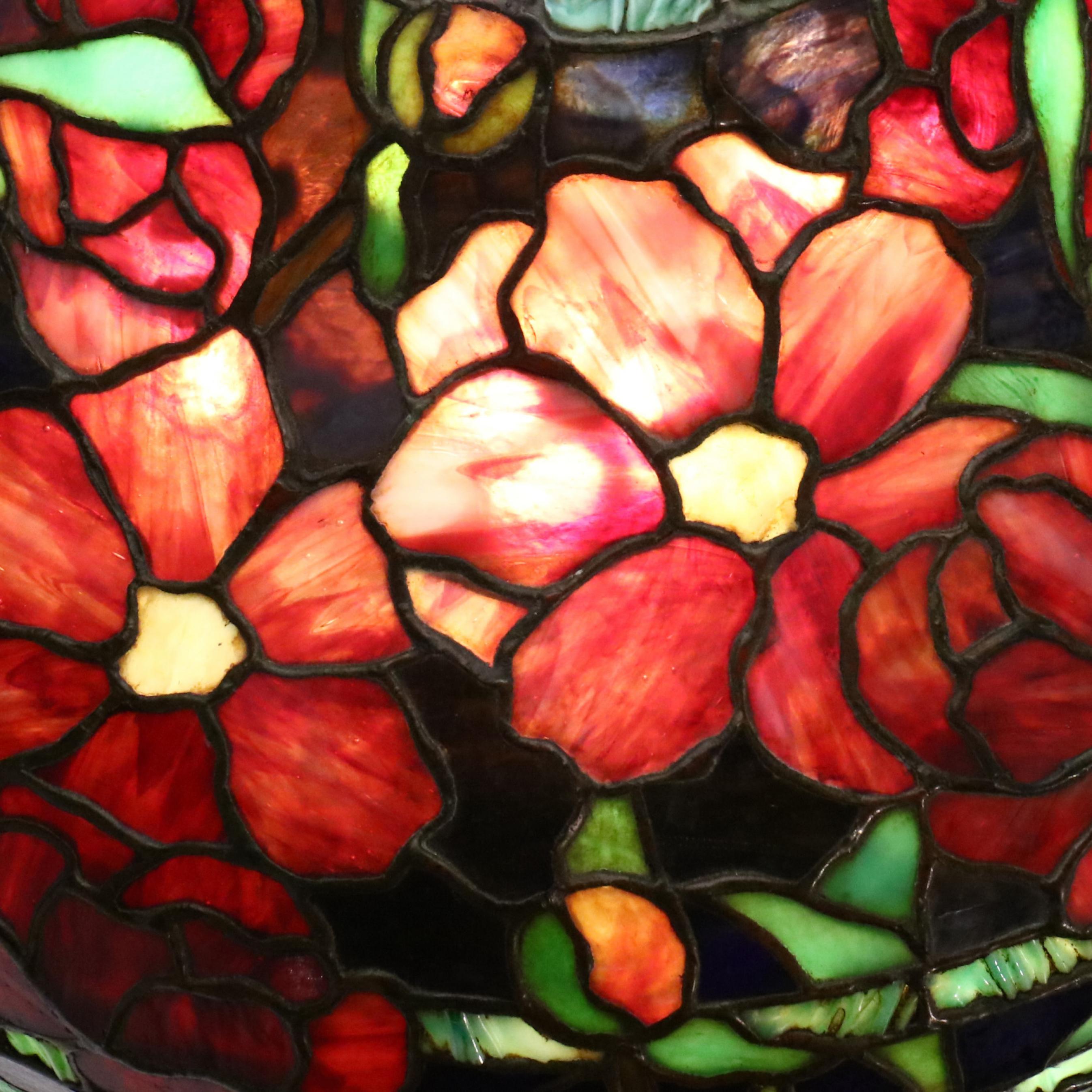
Tiffany Studios "Peony" Stained Glass Shade offered in The Signature Winter Auction
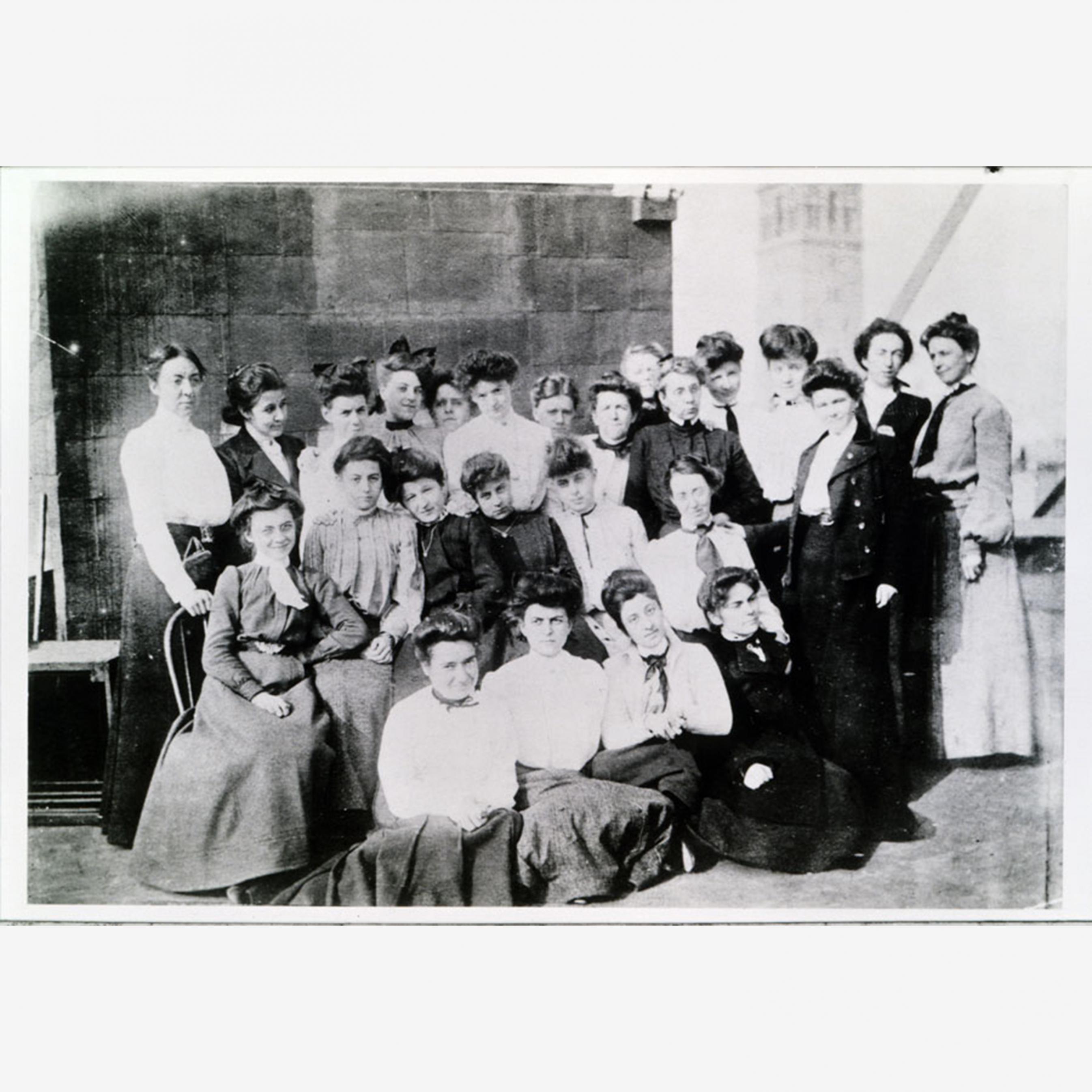
“Tiffany Girls” (Clara Driscoll at the far left) on the roof of Tiffany Studios, 1904–1905. The Charles Hosmer Morse Museum of American Art, Winter Park, FL.
Although in a sphere of relative creative freedom, Driscoll and the other Tiffany Girls most certainly faced limitations and challenges. The most obvious, aforementioned one being that married women couldn’t work at Tiffany Studios. Women also couldn’t join the unions, so they labored without protection. Tiffany, for his part, greatly valued the artistry and work of his female employees. He pushed back against union strikes as he could and paid women on the same scale as men.
Explore the intricacies of Driscoll’s Dragonfly and Peony designs in detail, as well as other works by Tiffany Studios, in The Signature Winter Auction. To learn more about Clara Driscoll and her career, visit the New-York Historical Society website.
The Signature Winter Auction
Saturday, December 4th
9:00am EST
The Signature Winter Auction
Saturday, December 4th
9:00am EST


